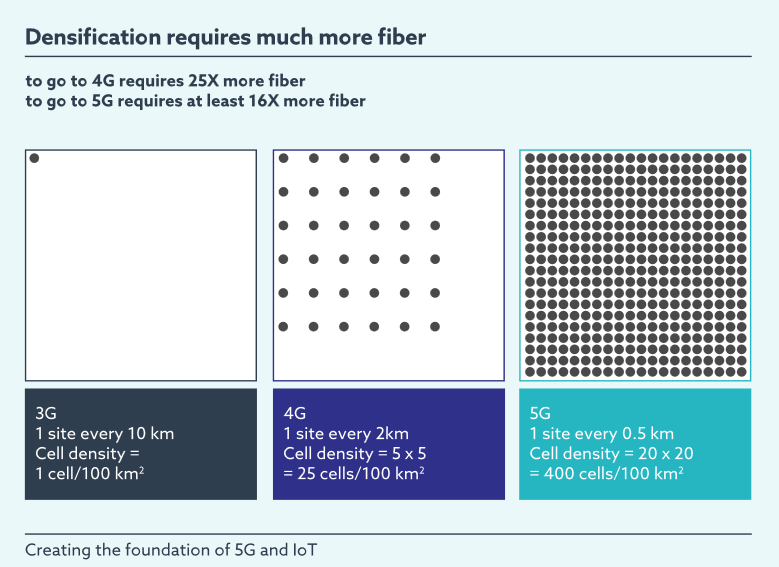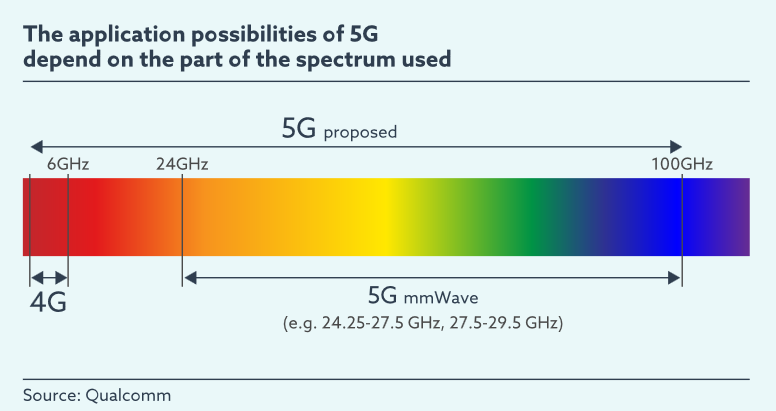Paving the way for 5G, IoT and Smart Cities with Fibre

Today, we’re seeing a multitude of drivers for fibre. Streaming video accounts for 70% of all Internet traffic and this percentage is growing. Cloud computing, including hosted servers, storage and backup needs to move terabytes of data quickly. Smart Cities need to support everything from electrical grids to traffic management.
Today, we’re seeing a multitude of drivers for fibre. Streaming video accounts for 70% of all Internet traffic and this percentage is growing. Cloud computing, including hosted servers, storage and backup needs to move terabytes of data quickly. Smart Cities need to support everything from electrical grids to traffic management.

Lisa R. Youngers
PRESIDENT & CEO OF FIBER BROADBAND ASSOCIATION
What’s more, there will be 50 billion sensor-equipped devices connected to the Internet of Things by 2020, all collecting and exchanging data. 5G next-generation services including machine communications and enhanced mobile broadband are further driving demand.
Fibre is future-proof, reliable and absolutely necessary for driving these innovations, and many more. It offers extremely reliable, low latency communication coupled with guaranteed availability. A fibre network backbone is also essential to machine to machine communication, where vast numbers of devices send short messages at irregular intervals. This requires flexible, non-physical, low power, low cost connections. For enhanced mobile broadband, fibre supports average and peak channel capacity and total network capacity as well as ubiquitous availability, high mobility and fast handover. That means transitioning between connection points is seamless and connection quality is consistent everywhere.
5G with its higher speeds, greater bandwidth and lower latency needs a huge amount of fibre. To meet 5G/wireless demands some 1.4 million miles of fibre will be needed in the top 25 US metro areas. That means a $150-180 billion investment in new fibre over five to seven years, according to research carried out by Deloitte. The move from 3G to 4G networks required a 25x increase in the amount of fibre in networks. Moving to 5G will require 16x more fibre. This will run to a vast number of small cells which are the basis for ongoing network densification needed to support 5G rollout, and vital to delivering the required capacity and coverage.
The rollout of small cells and 5G is changing the balance between backhaul and fronthaul in mobile networks. In mobile application, backhaul describes the link between a baseband and core network, used to transmit information to final destination. In turn, the backhaul part of the network is connected to a remote radio unit by fronthaul. This enables centralised computing/processing, allowing operators to consolidate resources, requiring less equipment and making network management and rollout easier. The fronthaul part of the network depends strongly on the presence of fibre.
Smart Cities are another important driver for fibre. Without enough bandwidth, you simply can’t run the applications people really want and need in a Smart City. On average, cities with fibre have 37% more deployed small cells and run over 35% more smart city applications. Key applications include smart grids for enhanced energy efficiency, smart health through, for example, patient monitoring, sensor networks which can improve public services, infrastructure usage and safety, smart mobility for optimizing traffic flows and improving road safety and city Wi-Fi as a service to residents and visitors.
What does the future have in store for fibre in the USA? Modern homes require a huge amount of bandwidth—more than 100 Mb/S! However, access varies strongly across the USA. Rural access is high on the agenda. More than 19 million Americans lack access to broadband—and the vast majority live in rural communities. 24% of rural Americans lack access to 25 Mb/s service. By contrast, less than 2% of urban Americans lack this same broadband access. Fortunately, we’re seeing bipartisan support for this issue, as politicians from different backgrounds see how important fibre is to future prosperity.
About the Fiber Broadband Association
The Fiber Broadband Association is the largest and only trade association in the Americas dedicated to the pursuit of all-fiber-optic network infrastructure to the home, to the business and to everywhere. The Fiber Broadband Association helps providers make informed decisions about how, where, and why to build better broadband networks with fiber optics while working with its members to lead the organization forward, collaborate with industry allies and propel the deployment of fiber networks. Since 2001, these companies, organizations and members have worked with communities and consumers in mind to build a better broadband future here and around the world. Learn more at fiberbroadband.org.







